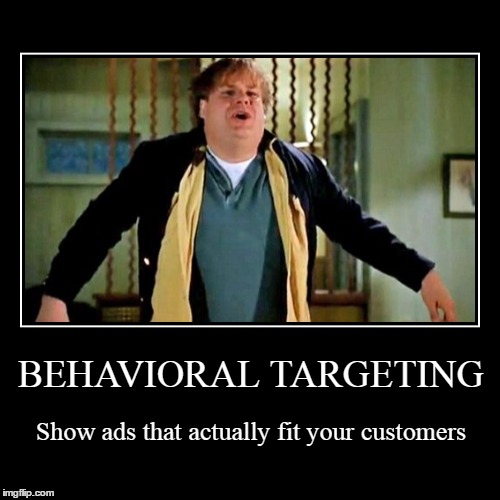Featured Post
Content is King: How to Create a Social Calendar That Rules
May 4, 2016 By M Blogs Leave a Comment
By: Caleb Gremmer
I’m a content creator that’s never gone viral. It may sound shocking to some, but it’s actually very common. Would I love to go viral? Of course! I don’t care what the content is, either, I just want to be able to say I’ve gone viral. In order to do so, it takes a lot of planning.
As a content creator, admitting this is an unrealistic desire might sound dangerous. But, it really speaks to what seems to be a common misconception about content marketing: Content and social media marketing programs are driven by widely viewed and shared posts.
In reality, few things truly go viral – a term which causes me, and I’m sure others, physical pain. For that to happen, a perfect combination of content, audience, timing and availability has to come together. It does happen, but it is rare.
The truth is, content marketing isn’t hitting home runs; it’s getting base hits. It isn’t playing the lottery; it is maxing out your 401k. It isn’t starving yourself to lose weight; it is sticking with grilled chicken and vegetables.
Like each of those comparisons, content and social media marketing require consistency to work especially since these marketing programs are driven by widely viewed and shared posts. Releasing one great piece of content to the world every few months and hoping for miraculous results will do basically nothing to build an audience. It will also do very little for brand awareness – if that’s what your more interested in – since your name is only getting out there sparingly. And, even if you do start to get traction but enter your busy season and forget to keep up with it, all that progress will be lost.
So how do you plan and make sure you’re on the right track of becoming viral? Create a content calendar.
Why is a calendar important?
A side effect of working without a plan is wearing people out. Quality content takes time. If you’re randomly releasing substandard content, your burning out your readers. It also puts stress on your content creation team. Deciding last minute that something must be released today forces those in charge of developing it to release something that might be just good enough, instead of great.
Once you have the system in place, however, you can evolve your content creation and distribution process. Instead of developing content and blasting it out whenever it’s ready, you can start working ahead. This should greatly improve the quality of your content. It should also allow you, your content team and your followers to breathe a little.
How is a calendar created?
Building a calendar will help you start to deliver quality content consistently. It will make your posts premeditated and allow you to do some analytic testing, if you’d like. And, getting started is as easy as finding a system that works for you.
There are some commercial products available if you’d like to take the guess work out. Sprout Social, ThriveHive and Buffer all offer different solutions to keep you on track.
If you’re not up to paying for a tool, utilizing Google Calendar is a great option. You can create a separate calendar with alerts to remind you when it is time to post. With Google Calendar, you can also quickly compare your social calendar with dates of holidays and other events important to your business.
Whichever path you choose, set down a plan and stick to it.
How is a calendar manager?
Organizing your calendar by social media outlet is a great way to make sure you are properly distributing across all channels. With that said, they are not equal. What plays on one will frustrate users of another. Luckily, there are a few standard suggestions for what and how much you should be posting on each network.
A while back Constant Contact put together a great infographic for this exact topic and it can serve as a guideline for you calendar. Though, every industry is different and you may find different things work for you. They suggest:
3-10 times/week
Facebook is obviously the standard at this point. Its posting algorithms change frequently (http://www.cbsnews.com/news/facebook-algorithm-changes-up-your-news-feed-again/) but sticking to this post amount will help keep you out in front of your desired audience without overwhelming them.
5+ times/day
Twitter is essentially a free-for-all still. Users there are accustomed to people they follow posting consistently and often with an uncapped quantity. Quality is always important but if ever there was a place where quantity can take over for a while, it is Twitter.
2-5 times/week
LinkedIn wasn’t always a significant player in the content game but it has been gaining ground. The professional tone usually means the content will be less conversational and more informative but that doesn’t mean it has to be overly heavy. Since it is a place where less sharing happens, it can be easy to overrun users.
Google+
3-10 times/week
While Google’s answer to Facebook never really took off the way they were hoping, it is still a valuable tool for content creators. They’ve made some nice style updates and it is easy to entice readers with their clean layout. As an added bonus, saying active on Google+ can help boost some SEO for company’s site.
5-10 times/day
Pinterest’s format allows users to quickly scroll and consume images and information. While this is great for users, it means you have to be diligent in your posting to be noticed. Keep your post volume high to make sure you cut through the clutter.
Remember, posts can be fun and conversational, but they should all have intent. Pull people in from different departments and brainstorm. Capture a wide range of ideas and then turn them into compelling content.
That’s it – it really is that simple. With the tips provided, you’ll be on your way to the best content calendar yet! Keep at it and maybe one of your postings- will go viral! If not, trust that your content calendar is working to keep your message fresh and consistent.
Caleb is a communications graduate from the University of Texas at Arlington, with a focus on journalism. Caleb has worked in a variety of fields including journalism, geographical information systems and marketing.
The Most Important Marketing Metrics for Your Company
April 26, 2016 By M Blogs Leave a Comment
By Stephen Peters, Senior Email Marketing Strategist, Content Marketing
In this day and age, it’s imperative for companies to capitalize on the plethora of data available to them. There are all sorts of tools and avenues to capture this data and companies that don’t utilize these tools are way behind the eight ball when it comes to marketing in 2016.
With each passing day, customers – existing and potential – are leaving digital fingerprints everywhere on the web. Whether that is while at work, on their phone, browsing Facebook or reading a blog, there is an opportunity available for a marketers with every click or tap.
The good thing with all these online interactions – whether it’s between two consumers or a consumer and a company – there are so many metrics that companies can be tracking to help fine tune their marketing strategies to maximize their ROI, return on investment.
When it comes to your company’s campaign, the metrics you’ll inevitably end up using will be reliant upon what goal is deemed most important. All projects are different, which can be said even inside one company – one goal could be customer acquisition while the next could be building branding awareness.
So with that said, here are four essential metrics companies should be tracking in their marketing campaigns.
- Bounce Rate: The average number of visitors who have left your website after only visiting one page – possibly coming to the website on an entrance page (click through from an ad, perhaps). It is also possible for each page to have its own bounce rate.
A bounce rate, though, is all relative. A particular page could be higher than industry averages or average of other pages on your website because those leaving that page may have found exactly what they’re looking for and don’t need to go anywhere else on your site. A customer could also have been created when they utilized the “contact us” page appropriately.
- Channel-Specific Traffic: This refers to where just before coming to your website, or what door, so to speak, they used to come to you.
Those channels are: direct (those who directly type in the company’s URL to visit the website), referral (those who come to your site from another website, usually by clicking a link that directs to your company’s site), organic (those who use a search engine and choose your website on the results page – this is generally non-paid) and social (those who arrive to your site via social media, which is a great indication of your SEO and social engagement).
- User Demographics: This is a tried and true metric of marketing, but it cannot be overstated enough. If you’re not targeting to the right audience, whether it’s by age, location, gender or any other quantifier, then you’re essentially throwing mud at the wall and seeing what sticks. Every company needs to identify the ideal consumer for their product or service to really hone in its marketing strategy.
When you can see where, or how old the audience is, you are able to discern whether the intention of your strategy is meeting its intended goal or not.
- New vs Returning Visitors: Want to know how well received your website is based off an existing campaign? This metric will tell you just that. New visitors could come from a variety of reasons, such as a response to being mentioned on a different website/blog or an increase in budget for a paid campaign. A new email campaign could lend itself to an uptick in returning visitors, which could mean your email campaign was a success.
Just remember that no two campaigns, just like companies and goals are the same. While one metric or set of metrics may work for one campaign, it doesn’t mean it will carry over to the next. These data points are the vehicles that make your goals real and concrete, and make your attempts at reaching them observable and quantifiable.
 Stephen is a communications graduate from the University of Texas at Arlington, with a focus on journalism. Stephen has worked for the Dallas Morning News, Fort Worth Star-Telegram, ESPN Radio and freelanced for a number of other entities, which include newspaper, magazines and marketing. You can find Stephen on Twitter – @iamspeters or LinkedIn – https://www.linkedin.com/in/stephenpeters7
Stephen is a communications graduate from the University of Texas at Arlington, with a focus on journalism. Stephen has worked for the Dallas Morning News, Fort Worth Star-Telegram, ESPN Radio and freelanced for a number of other entities, which include newspaper, magazines and marketing. You can find Stephen on Twitter – @iamspeters or LinkedIn – https://www.linkedin.com/in/stephenpeters7
3 ways to turn millennials into association members
April 21, 2016 By M Blogs Leave a Comment
By Julie Bernhard
The millennial membership mystery has had association executives scratching their heads for quite some time. Unlike the previous generation, Generation Y has only one priority: they come first. From their selfie obsessions to their helicopter parents, outsiders have decided this squad operates in an entirely different reality than their baby booming predecessors.
With that much of a discrepancy, the recruitment debate appears to be ongoing in the association world. In a survey of association executives presented at the 2013 Digital Now conference, 74 percent of respondents said attracting young members is important, but only 44 percent said they are satisfied with their ability to do so. How to grab the attention of one of the most distracted generations has posed a serious challenge, but one that cannot be swept under the rug.
More than one-in-three American workers today are millennials, and just last year they surpassed Generation X to become the largest segment of the American workforce, according to new Pew Research Center analysis of U.S. Census Bureau data. With potentially a third of your membership base coming from this generation, it would be a death sentence to continue membership business as usual.
The good news is, change is possible, feasible and even affordable. With a little alteration in perspective, these guys could be tweeting your acronym to the masses in no time. Learn to embrace this base with an open mind by considering a few simple suggestions.
Conduct a cost-benefit analysis.
According to a survey by Bank of America and USA Today, nearly 40 percent of the population reports being “chronically stressed” about money. Part of that is because millennial graduates report they spend 18 percent of their annual salary on student loan payments. As a debt-laden bunch of young professionals, how much something costs darn well better be worth their while.
Conduct a review of your current offerings and evaluate what best suits their class specifically. Maybe they don’t need some of what is included, and think about compiling a tiered membership, at an entry-level price. After a year with your organization, they will be able to preview first-hand and understand its value on their own, all the while not missing out on a new member due to cost restrictions.
Go digital or go home.
The one thing millennials have mastered is the Internet. It practically raised most of them. Googling something is their M.O. Their smartphone is basically another one of their limbs. If you aren’t fully functional in the digital space, you essentially don’t exist.
Don’t skimp on the marketing budget when it comes to implementing a digital recruitment strategy or new technology. While having a social media presence or app is great, it will accomplish absolutely nothing if it is done cheaply or carelessly. These guys are the pioneers of virtual relationships, so they can sniff out an imposter faster than a Foursquare check-in. Have a dedicated post in your office or on your membership committee that is responsible for maintaining the website and ensuring that all the most current information is accessible on social media channels. If at any given point you ask them to pick up the phone, you have already lost their attention.
Evolve and involve.
According to findings from Buzz Marketing Group’s, “Professional Organizations Study 2015,” survey, more than one quarter of millennial respondents referred to professional organizations as “old school.” The familiar mantra of “but that’s how we have always done it!” will kill your membership growth faster than an Instagram. It is imperative to evolve as an organization all the while involving those you are attempting convert in the conversation.
As the forerunners of social networking, millennials thrive on a sense of community. They have a need to feel constantly connected. Offer these guys opportunities to serve on boards as junior members to provide their input, or create new committees for their age-group specifically that extends a voice and an integral step in the process of doing association business. By granting them an opportunity to not only be seen, but heard, they are more likely to hop on board.
In short, the name of the millennial game is inclusivity and connectivity. With a little more understanding and slight strategic tweaks, obtaining your newest recruits will be as easy as updating your Facebook status. By thinking beyond the pin boards and Lo-Fi filters, you will uncover the greatest addition to your organization to date.
 Julie Bernhard brings a vast communication background to MultiBriefs where she serves as executive editor. A native of Boerne, Texas, and journalism graduate from Texas State University, Julie first served as editor-in-chief of her high school newspaper and from there her passion flourished. In college, she wrote for the student publication The University Star, worked as on-air reporter for the student radio station and news station, in addition to interning at several local TV stations. Her first job was with a nonprofit organization where she served as the communications specialist, creating and producing everything from their publications to commercials.
Julie Bernhard brings a vast communication background to MultiBriefs where she serves as executive editor. A native of Boerne, Texas, and journalism graduate from Texas State University, Julie first served as editor-in-chief of her high school newspaper and from there her passion flourished. In college, she wrote for the student publication The University Star, worked as on-air reporter for the student radio station and news station, in addition to interning at several local TV stations. Her first job was with a nonprofit organization where she served as the communications specialist, creating and producing everything from their publications to commercials.
8 tips for creating an effective buyer persona
April 20, 2016 By M Blogs Leave a Comment
By Danielle Manley
Do you have an effective buyer persona? Chances are, you probably don’t – or you aren’t using it right. Only 44 percent of businesses have a buyer persona at all, and 85 percent do not do it effectively, according to Buyer Persona Blog.
An effective buyer persona gives businesses an up-close look at their average buyer, which can be used to target customers more efficiently, decrease customer acquisition costs and increase revenue. It allows you to focus in on exactly who is buying, not just those who could potentially be interested in buying at some point. You want to be as accurate as possible, and with a good persona established, you will see a return on investment much quicker.
Tips for building your buyer persona:
- Analyze your current customer base in-depth. Determine your average customer from as many aspects as possible to create a complete vision – dig deeper than what is obvious at the surface. Are the majority small businesses or large corporations? Where are most of the companies located? Do the majority of your businesses interact on social media regularly? Is the buyer an online business or a physical establishment? How are these businesses structured? What purpose does the customer’s business serve and what population do they serve? Your questions should continue and be based on your business, but analyze everything. You never know what you could discover.
- Create multiple personas. Some companies utilize only one buyer persona successfully; however, there are many that need more, and I recommend at least having two. There are two different ways of creating multiple personas:
- Create a negative persona. While you want to know who your buyers are, it is also helpful to know who your customer is not.
- Create more than one buyer persona. Sometimes two distinct buyers are present. If you aren’t sure if you need two different buyer personas, try it. You might not need it, but you also might find a group of potential buyers that you didn’t realize were there. If you have more than one buyer persona, more than one action plan should be created as well.
- Talk with your sales team. They are the ones selling so ask them for their insight. Work as a team – different perspectives can be eye-opening.
- Ask your loyal customers what makes them stay, why they love you and what makes you better than the competition? A company can state over and over again what they think they do best and where their focus is. But, how do the customers see it? Your customers might see something you don’t. Ask them what keeps them coming back. Your strengths should be your focus. In addition, ask former customers why they left. Whether you plan to “fix” the problem or simply take the focus off your negative aspects, knowing where you are weak improves your ability to succeed.
- Use customer behavior patterns to determine what leads up to a purchase. When do customers typically purchase? What factors influence a purchase? What purpose does your product serve and what requires the need for this product? If you know when a customer is likely to purchase and why, you can push your product and message at the right time with the right message.
- Business goals and values should align. Does your company focus on quality over quantity or vice versa? Do you fit into the go-green initiative? Do you give back to the community? When two companies have opposite views, it can affect buying potential and reputation. When two companies share views, buying potential increases and business relationships can grow.
- Analyze over time. Buyers change. Companies change. Revisit your buyer persona regularly to provide your entire company with the most up-to-date information on your buyer.
An effective buyer persona includes insider knowledge that requires research, analyzation and continuous development. With benefits like increased customer satisfaction, quicker ROI on advertising and marketing, lowered customer acquisition costs and more, you wonder why more companies haven’t utilized buyer personas more effectively. Review your buyer persona and determine if improvements need to be made – most likely the answer is yes.
 Danielle Manley is an assistant executive editor at MultiBriefs. Danielle graduated from the University of North Texas in 2012 with a Bachelor’s Degree in English with a focus on technical writing. She is also a regular contributor to MultiBriefs Exclusive.
Danielle Manley is an assistant executive editor at MultiBriefs. Danielle graduated from the University of North Texas in 2012 with a Bachelor’s Degree in English with a focus on technical writing. She is also a regular contributor to MultiBriefs Exclusive.
Behavioral Targeting: What You Say and How You Say It Matters
April 13, 2016 By M Blogs Leave a Comment
According to Fierce CMO, 93% of B2B purchases start with online research, and when your ideal buyers start that process your brand needs to be there. That’s what makes behavioral targeting so crucial for talking to the right people — but you still have to make sure you’re saying the right thing. This goes beyond just showing off your solution to a buyer who’s shown interest based on their online activity. It’s about grabbing attention in a way that inspires action through carefully-chosen words and eye-catching design. Or to put it simply, a winning behavioral targeting strategy isn’t just about finding buyers that fit your company, it’s also about creating ads that fit your buyers.
If you want to know more about that winning behavioral targeting strategy mentioned above, you can always click over to our blogs about behavioral targeting.










